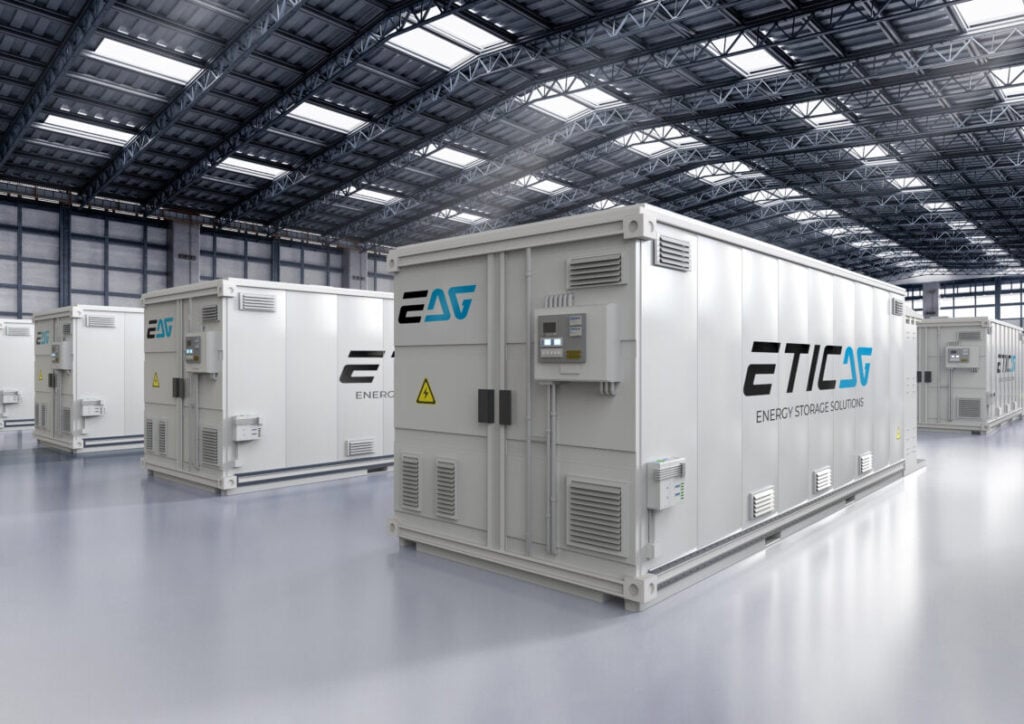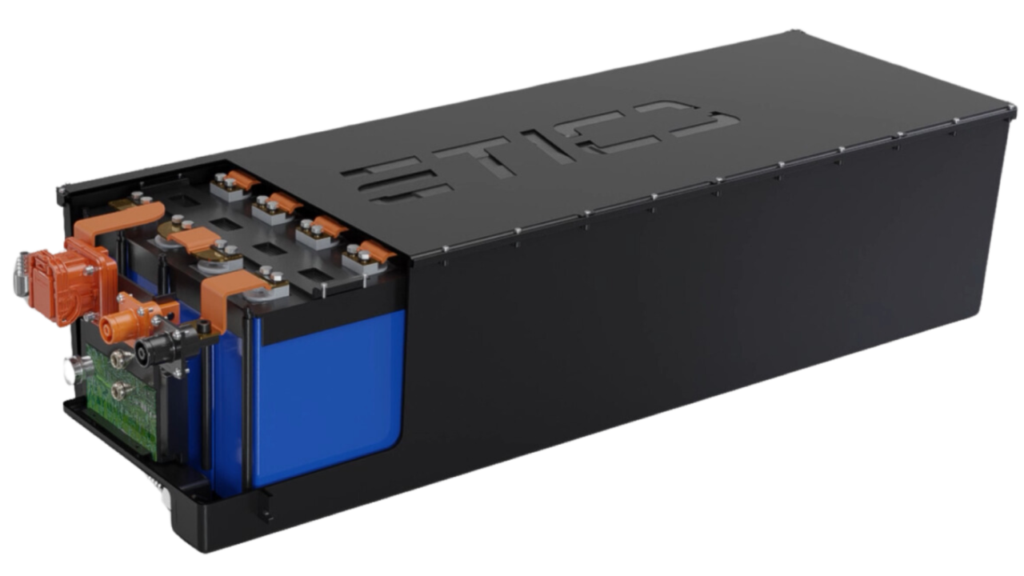
Jack Wu, chief technology officer (CTO) at EticaAG, says it’s time for a new approach to battery storage thermal management and fire suppression.
EticaAG is the original equipment manufacturer (OEM) of a patented immersion cooling battery energy storage system (BESS) technology, a breakthrough solution that prevents fire propagation from thermal runaway. It sets a new standard in safety for energy storage.
Enjoy 12 months of exclusive analysis
- Regular insight and analysis of the industry’s biggest developments
- In-depth interviews with the industry’s leading figures
- Annual digital subscription to the PV Tech Power journal
- Discounts on Solar Media’s portfolio of events, in-person and virtual
Battery storage fire events can have severe and far-reaching impacts, affecting individual projects, entire portfolios, and the broader energy storage industry.
Impacts on individual projects include asset damage and operational downtime, insurance costs, and claims. Then, there are the blows inflicted on investor confidence, risk management, and regulatory and compliance implications at the portfolio level.
This is before we factor in the damage that could be caused to public perception, market trust, and potential regulatory holdups, which can have a far-reaching impact across the wider industry.
“A fire event can damage or destroy expensive equipment, leading to significant replacement costs and potential revenue losses from downtime. Fire incidents can halt operations for weeks or even months, affecting the return on investment (ROI) for that project and reducing the asset’s overall lifetime profitability,” Wu says.
“Portfolios with multiple projects could face heightened scrutiny from investors and insurers. Increased risk across a portfolio can lead to a re-evaluation of asset value, negatively affecting investment potential. Multiple fire events in a portfolio may prompt tighter regulatory oversight and more stringent safety requirements. Compliance with new regulations often brings additional operational and capital costs,” he says.
Meanwhile, high-profile fire incidents can erode public and stakeholder trust in energy storage, slowing the industry’s growth and adoption rates, particularly in sensitive applications like residential or urban installations.
Also, fire events often trigger reviews of existing safety standards, which can lead to new, stricter codes. This may slow down project development timelines and increase costs for the industry.

“EticaAG addresses these concerns by offering a robust safety solution through our proprietary immersion cooling technology,” says CTO Jack Wu.
“By submerging cells in a fire-retardant liquid, we not only manage heat but actively suppress fire propagation. This approach is designed to eliminate the likelihood of fire escalation, providing asset owners and the industry with the reliability needed to protect both individual investments and public confidence in BESS.”
The main risks
“The main fire risks in battery energy storage systems stem from thermal runaway, an event where a cell overheats and triggers a chain reaction within neighbouring cells,” EticaAG’s CTO says.
Thermal runaway can be caused by a variety of factors and typically occurs due to:
1. Overheating: Excessive temperature increases, often from high ambient temperatures or excessive charge/discharge rates, can degrade cell materials and lead to thermal runaway.
2. Overcharging: If cells are charged beyond their voltage limits, they can experience internal short circuits, leading to heat generation and potential fire.
3. Mechanical Damage: Physical damage to battery cells—often due to mishandling, installation issues, or environmental factors—can lead to cell punctures or crushing, which compromises cell integrity and may initiate a thermal runaway event.
4. Internal Short Circuits: Manufacturing defects, aging, or electrolyte degradation can cause internal shorts, generating heat that may eventually lead to cell venting or explosion.
5. External Factors: Exposure to fire, water ingress, or severe impacts from natural disasters (like earthquakes) can damage cells or cause other materials in the BESS to ignite.
EticaAG prioritises addressing these risks through a unique, patented immersion cooling technology.
“Unlike traditional air cooling or passive fire suppression methods, our system submerges battery cells in a fire-retardant liquid, providing both thermal management and active fire suppression,” Jack Wu says.
“This liquid cooling system isolates each cell and absorbs excess heat, preventing thermal runaway from spreading across cells, which greatly reduces the risk of cascading fires.”
Limitations of current approaches
The industry has widely adopted liquid cooling as the primary BESS thermal management technology.
While this is a step up from traditional air cooling, when it comes to fully mitigating fire risks and effectively managing thermal events in high-density BESS setups, liquid cooling has its limitations, according to Jack Wu.
EticaAG has identified four main areas where immersion cooling compares very favourably to liquid cooling.
- Liquid cooling offers only partial coverage
Liquid cooling typically involves channels or plates that carry coolant around or near the battery cells, focusing on specific hotspots.
“This targeted approach can be effective for cooling certain areas but often leaves other areas within the module less protected,” CTO Wu says.
Uneven cooling can allow hotspots to develop, particularly in densely packed cells, increasing the chance and risk of overheating and rapid ageing.
- Lack of direct fire suppression
Unlike immersion cooling, which actively surrounds each cell in a non-conductive fire-retardant liquid, traditional liquid cooling does not directly cover or submerge the battery cells.
As a result, liquid cooling provides thermal management but not fire suppression.
“In the event of a thermal runaway, liquid-cooled systems may not stop fire propagation, leaving the risk of escalating events unaddressed,” Jack Wu says.
- Liquid cooling systems add complexity and requirements for maintenance
Liquid cooling systems often rely on extensive plumbing, pumps, and heat exchangers, which add to the complexity and maintenance requirements.
If leaks or failures occur within the cooling circuit, the entire system’s effectiveness can be compromised.
“Additionally, these added components increase operational costs and introduce potential points of failure,” Wu adds.
- Lag in thermal event response
“While liquid cooling can manage gradual increases in heat, it may not respond quickly enough to a sudden thermal runaway event,” Jack Wu explains.
The system’s reliance on external heat exchangers means that there’s often a delay in cooling efficiency when cells rapidly overheat, which is crucial for preventing cascading failures in high-energy battery setups.
EticaAG’s immersion cooling advantage
Immersion cooling is inherently simpler, with fewer mechanical parts, no external heat exchangers, and reduced maintenance needs.
“By submerging each cell, our technology offers a holistic approach to fire prevention, suitable for high-capacity BESS applications where safety and reliability are paramount,” Jack Wu tells us.
EticaAG’s immersion cooling surpasses liquid cooling by combining comprehensive thermal management with active fire suppression. “This allows us to provide an unparalleled level of safety and efficiency, positioning our technology as the ideal choice for the evolving BESS industry.”
To learn more, visit https://eticaag.com/bess-immersion-cooling/

